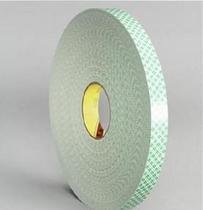Contact: Manager Li
Mobile: 18616323736
Tel: 021-59790830
Fax: 021-59791081
邮 箱:729094@qq.com
Address: No. 151, Yinglian Road, Baihe Town, Qingpu District, Shanghai
What are the characteristics of double-sided tape products?
Double-sided tape is made of paper, cloth, plastic film as the substrate, coated with solvent-based polyacrylate adhesive on both sides, and then covered with easily peelable materials. Double-sided tape is widely used in clothing, shoes and hats, leather, luggage, embroidery, posters, signs, envelopes, decorations, electronic products and home appliances, etc., easy to use. The use and application of double-sided adhesive: The professional double-sided adhesive adhesion technology can not only solve all adhesion problems, but also have a wide range of applications: whether it is in metal bonding, powder coating surface, glass, plastic or fiber, etc. The choice of type material is bonded, double-sided tape can meet your needs.

With different choices of double-sided tape, you can easily complete the design purpose of joining, sealing, filling gaps, shock absorption, sound absorption, electrical conduction or thermal conduction. The die-cut products of double-sided tape are mainly used in the bonding of notebook computers, mobile phones, servers, copiers, fax machines, automobiles, LCD peripherals and other fields. The use of double-sided tape in industrial production can effectively reduce costs and improve the efficiency of the manufacturing process.
Double-sided tape product features: 0010010 nbsp; 0010010 nbsp;
(1) Balance of initial adhesion, holding adhesion and lasting adhesion;
(2) It has a wide range of adaptability and can play a good bonding role on most materials;
(3) Good aging resistance ... 0010010 nbsp; 0010010 nbsp;
Double-sided tape industry application: 0010010 nbsp; 0010010 nbsp;
(1) Insulation materials, sound insulation materials 00 1 00 1 0 nbsp; material fixing;
(2) Electronic industry uses such as electrical components and circuit boards;
(3) Various uses for pasting, connecting, fixing and fitting
Previous: Several reasons for Mara tape breaking
下一条: What are the functions and methods of double-sided tape in daily life?
Related News
- How is kraft tape exist?
- Where to join Shanghai Masking Tape
- Teach you how to distinguish the advantages and disadvantages of transparent sealing tape
- Masking tape also has unknown tips
- Introduction of the characteristics of transparent sealing tape
- What is butter double-sided tape?
- How to judge the quality of masking tape
- Warning tape how to maintain in daily
- Product characteristics and application of PE foam tape
- Do you know how to save a few pieces of gold finger tape
- Several reasons for Mara tape breaking
- Types of double-sided tape
- What are the characteristics of warning tape?
- What are the packaging materials of Shanghai Yongxi Packaging Materials Co., Ltd.
- How about Shanghai Camo Cloth Tape Company
- How is butter double-sided tape removed?
- How to remove double-sided butter tape on the wall?
- Characteristics of transparent sealing tape
- How to use transparent sealing tape?
- Where is the use and application of butter double-sided tape?


